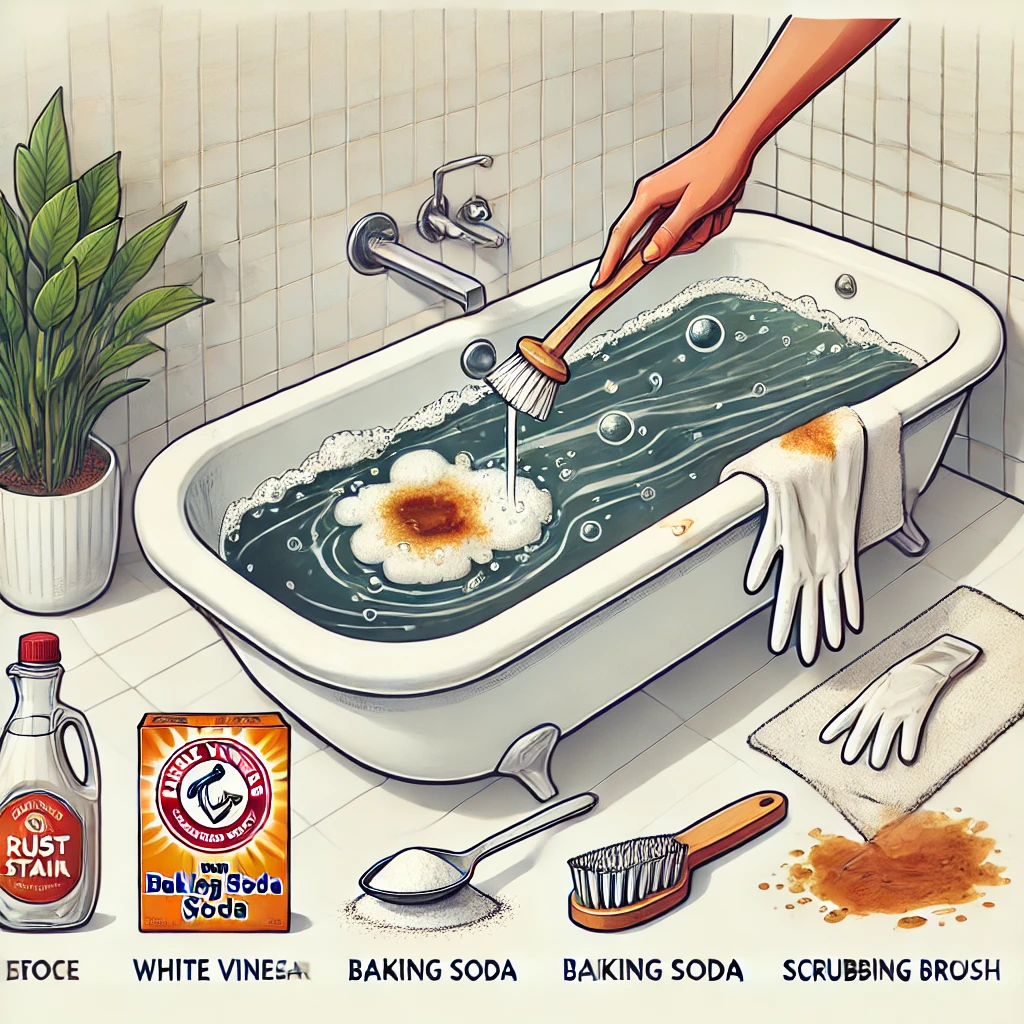
Rust stains in bathtubs are a common issue that many homeowners face. These unsightly marks are often caused by the interaction of iron-rich water with surfaces in your tub. When water containing high levels of iron comes into contact with oxygen, it creates iron oxide, commonly known as rust. Additionally, metal items left on wet surfaces, such as shaving cream cans or hairpins, can leave rust stains if moisture lingers. Over time, these stains can become stubborn and harder to remove, detracting from the overall appearance of your bathroom.
Addressing rust stains promptly is essential for maintaining the cleanliness and aesthetic appeal of your bathtub. Left untreated, rust stains can embed themselves deeper into the surface, making them increasingly difficult to clean and potentially causing permanent discoloration. Beyond the visual aspect, a clean bathtub is vital for maintaining hygiene. Stains can harbor bacteria or mold, compromising the sanitary condition of your bathroom.
Understanding Rust Stains
Rust stains in bathtubs are caused by the presence of iron, either from the water supply or from objects left on the tub’s surface. When water with high iron content reacts with oxygen, it forms iron oxide, the culprit behind those reddish-brown streaks. Hard water, which is rich in minerals, is a primary contributor to these stains. Another common source is the prolonged contact of metal objects—such as shaving cream cans, hairpins, or tools—with the wet surface of the tub. Over time, these items corrode and leave rust marks behind.
Understanding the root causes of rust stains is the first step in effectively addressing and preventing them. By identifying whether the stains come from your water supply or external factors, you can choose the most effective cleaning and preventative measures.
Preparation Before Cleaning
Before diving into the cleaning process, preparation is essential for a safe and efficient outcome.
- Safety Precautions: Always wear gloves to protect your hands from abrasive surfaces and cleaning agents. Ensure the bathroom is well-ventilated by opening windows or turning on an exhaust fan, especially if you plan to use chemical cleaners.
- Tools and Materials Needed: Gather the following items:
- A scrub brush or sponge (preferably non-abrasive to avoid damaging the tub surface).
- Natural cleaning agents like vinegar, baking soda, or lemon.
- Chemical rust removers if natural methods are insufficient.
- Clean towels for wiping and drying.
- A bucket or container for mixing cleaning solutions.
Being well-prepared ensures that you can tackle the rust stains effectively while protecting both yourself and your bathtub.
Natural Cleaning Methods
For those seeking eco-friendly solutions, natural remedies can be both effective and safe for removing rust stains.
- Vinegar and Baking Soda:
- Pour white vinegar over the rust-stained area.
- Sprinkle baking soda generously on top of the vinegar.
- Allow the mixture to sit for 15-30 minutes.
- Scrub gently with a sponge or brush and rinse with warm water.
- Lemon Juice and Salt Paste:
- Squeeze fresh lemon juice over the stain.
- Sprinkle salt to create a paste-like texture.
- Let the mixture sit for 10-15 minutes before scrubbing.
- Rinse thoroughly with water.
These natural methods are not only effective but also safe for the environment and gentle on your bathtub’s surface. They are particularly useful for light to moderate stains.
Chemical Cleaning Solutions
For stubborn rust stains that resist natural remedies, chemical cleaners can provide a more powerful solution.
- Overview of Rust Removal Products:
Products such as Rust-Oleum or CLR (Calcium, Lime, and Rust remover) are widely available and specifically formulated to dissolve rust. - Step-by-Step Guide for Using Chemical Rust Removers:
- Read the instructions carefully and follow all safety guidelines.
- Apply the product directly to the stain.
- Let it sit for the recommended duration, typically 5-10 minutes.
- Scrub gently and rinse thoroughly with water.
- Tips for Selecting the Right Product:
- Choose a product compatible with your bathtub material (acrylic, porcelain, or enamel).
- Test on a small, inconspicuous area first to ensure it does not damage the surface.
Chemical solutions are highly effective but should be used sparingly and with caution to prevent potential damage to your tub.
Preventing Rust Stains in the Future
Prevention is the best way to avoid recurring rust stains.
- Regular Cleaning and Maintenance:
- Wipe down your bathtub after every use to prevent standing water.
- Clean regularly with mild detergents to keep the surface free from mineral deposits.
- Install Water Softeners or Filters:
- A water softener can reduce the iron content in your water, preventing rust from forming.
- Avoid Practices That Lead to Rust:
- Keep metal objects, such as cans or tools, off wet surfaces. Use plastic or waterproof containers instead.
These practices help maintain a stain-free bathtub and extend the life of your bathroom fixtures.
Read more: How to Clean Granite Countertops
Conclusion
Rust stains in bathtubs can be a nuisance, but with the right approach, they’re entirely manageable. From natural remedies like vinegar and baking soda to chemical solutions for tougher stains, there are plenty of options to restore your tub’s pristine appearance. By taking preventative steps, such as regular maintenance and reducing iron content in your water, you can keep rust stains at bay. And when all else fails, calling a professional ensures your bathtub stays clean and rust-free for years to come.
